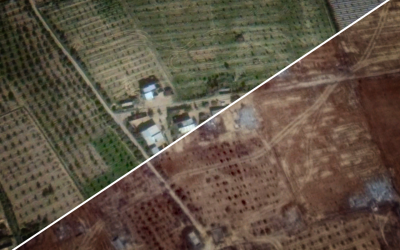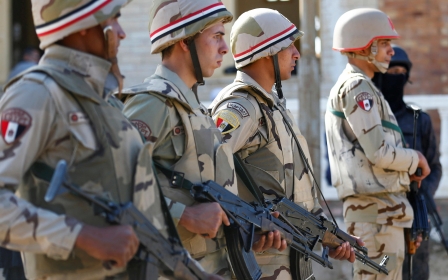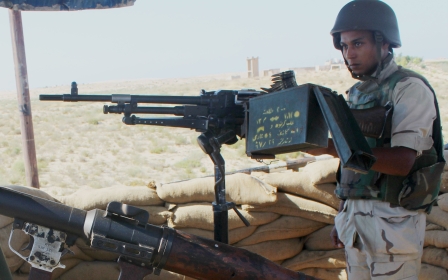Egypt's mass demolitions of Sinai homes 'likely war crimes'

The Egyptian military's policy of demolishing thousands of homes in the Sinai province in the name of counter-terrorism amount to war crimes, a rights group has warned.
Human Rights Watch has observed that between late 2013 and July 2020, the army destroyed at least 12,350 buildings, most recently in al-Arish, the capital of Northern Sinai.
The army has also destroyed and closed off 6,000 hectares of farmland, mostly since mid-2016, with thousands estimated to be have been displaced more than once.
Cairo has justified the demolitions and evictions as necessary in its fight against Wilayat Sina, a local Islamic State (IS) group affiliate responsible for attacks against civilians and military targets.
The area has been closed off to the public, with Egypt's military preventing journalists from entering the restive region.
The house demolitions began in 2013 and escalated in October 2014 when the Egyptian government issued a decree to evict residents from a 79-sq km buffer zone which included the entire city of Rafah, where over 70,000 people lived.
Cairo has not released official statistics but HRW believes that over 100,000 of North Sinai's 450,000 residents have been displaced or left the region since 2013. Most of those evicted have yet to receive compensation and have not been informed when they can return to their homes, the group said.
Joe Stork, deputy Middle East and North Africa director at HRW, said the demolitions and evictions reflected an "abusive official mentality that dismisses the wellbeing of Sinai residents".
“The Egyptian government should end abusive evictions and demolitions, accelerate fair, transparent compensation for everyone possible, and provide assurances that evicted residents can return home as soon as and whenever possible,” he added.
Lives 'turned upside down'
Since 2017, the military has destroyed properties to create a buffer zone in al-Arish and Rafah.
Satellite images analysed by Middle East Eye in 2019 showed that Egypt's military campaign in Sinai had destroyed much of the environment, with large swathes of land converted to military bases and the area becoming littered with army checkpoints.
Residents also told MEE that the military gave them "little notice" before their homes were demolished and offered unfair compensation or failed to provide the displaced people with anywhere to stay.
'Everyone was displaced. No houses left. It became a ghost town. And even after that, the militants are still hiding there'
- Rafah truck driver
"We left our house in 2016. Our lives were turned upside down. Now we cannot plan six months ahead because we don't know whether the houses we live in now will be demolished or not," a truck driver from Rafah told MEE.
"Everyone was displaced. No houses left. It became a ghost town. And even after that, the militants are still hiding there," he said.
A previous report published by HRW in 2019 detailing "serious abuses" by the army against civilians in North Sinai drew angry denials from Cairo.
Dozens of security personnel have been killed in North Sinai since February 2018, according to official figures.
The army says some 970 suspected militants have also been killed.
But the province has remained largely closed to journalists, making the compilation of independent casualty figures almost impossible.
Middle East Eye propose une couverture et une analyse indépendantes et incomparables du Moyen-Orient, de l’Afrique du Nord et d’autres régions du monde. Pour en savoir plus sur la reprise de ce contenu et les frais qui s’appliquent, veuillez remplir ce formulaire [en anglais]. Pour en savoir plus sur MEE, cliquez ici [en anglais].





